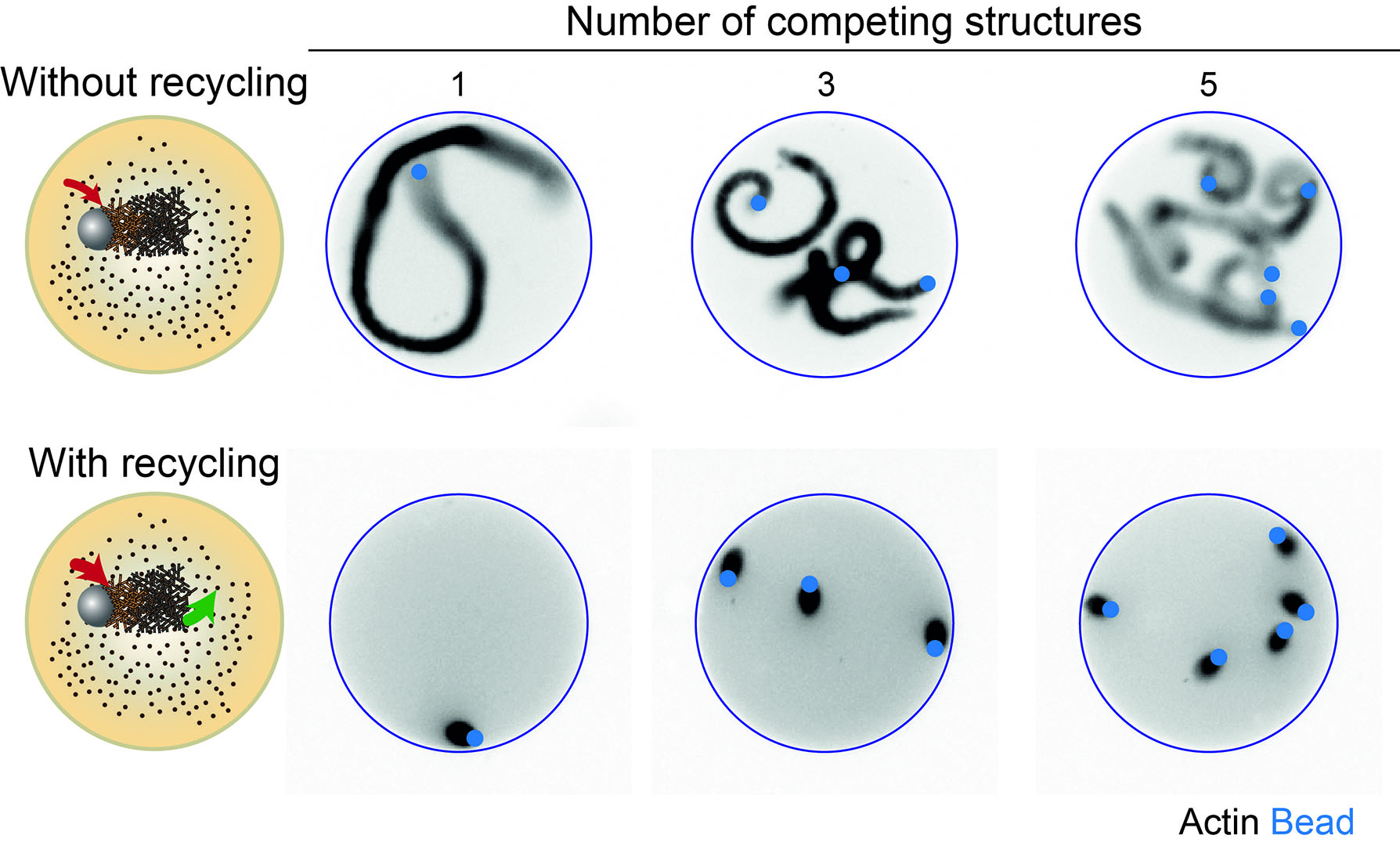Actin is a constitutive protein of the cytoskeleton, regulating cell shape, movement and division. Actin polymerizes into filaments that form dynamic networks in the presence of specific proteins. Within the cell, as access to resources is limited, there is competition for their use: networks have to share the same resources in order to coexist and perform their respective functions. Some of these sub-networks are located at the periphery, others more towards the center of the cell. Some are very dense and homogeneous, while in others filaments forming the sub-networks create architectures that are more heterogeneous. They are also more or less extensive and more or less rigid. How do these networks coexist in this competitive, resource-constrained environment?
Authors of this study analyzed how resources are shared between different cell architectures. To do this, they reconstituted the competition between several actin networks using purified proteins, in order to grow these networks in micro-wells from small beads. This biomimetic system made it possible to control the number of competing networks, as well as the available quantity of resources (actin and associated proteins).
As expected, they observed that if one network consumed more resources than the others, it prevented its neighbors from growing. On the other hand, if these networks are dynamic and renew themselves by constantly disassembling and reassembling their filaments, they release the resources they have used and allow the other networks to use them in turn.
The constant renewal of structures is an essential signature of living systems, and it is this fundamental mechanism that enables the coexistence of different networks, with different sizes and levels of consumption.


This study shows how the renewal of a dynamic system enables the sharing of resources and thus the coexistence of the strongest elements with the weakest. More generally, this study echoes the competition for available resources that exists at all levels of life, between different species in nature, between different organs in an organism or between different cells in a tissue.
- Alex Mogilner (Courant Institute, New York)
Fundings
ANR-24-CE13-3582 SCALING (Alexandra Colin)
ANR-23-CE13-0023 MOVING (Laurent Blanchoin)
ERC 741773 AAA (Laurent Blanchoin)
ERC 771599 ICEBERG (Manuel Théry)
- GRAL (ANR-17-EURE-0003) (mulife platform)